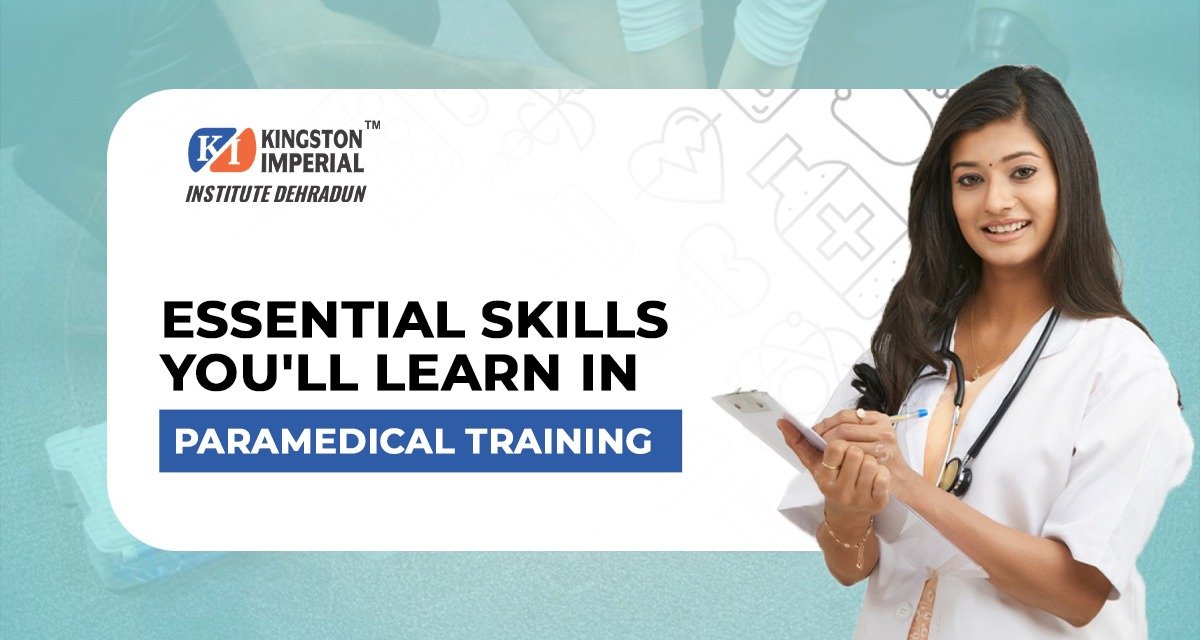
The healthcare field defines professionals through medical competence and fast and effective response capabilities in emergencies. The key skills in paramedical training enable people to perform important patient care duties before medical facilities receive them.
During emergency responses, emergency medical technicians (EMTs), paramedics, and other healthcare responders provide initial field assistance because their key skills in paramedical training equip them with essential healthcare knowledge. Paramedical training encompasses diverse capabilities that include procedural mastery and communication development, among many other subject areas.
This article will analyze essential paramedical training techniques and abilities candidates need to prioritize while examining critical methods that lead to achievement in such a challenging profession.
Key Skills in Paramedical Training
Patient Assessment and Triage
Patient assessment stands as the initial essential ability which paramedical trainees must master. The training focuses on quick patient evaluation through assessment of vital signs symptom recognition and situation severity determination. Triage stands as a major focus point because it represents a structured approach to determining patient treatment sequence according to medical necessities. Fast critical decisions made by paramedics through their training determine the survival chance for patients in emergencies.
The training mostly focuses on
- Quick patient evaluation through vital signs assessment.
- Symptom recognition and situation severity determination.
- Triage operates as a standardized framework that determines patient care order through medical priority criteria.
Basic and Advanced Life Support (BLS and ALS)
Every paramedic must have competency in Basic Life Support techniques and Advanced Life Support procedures. The core functions of BLS include:
- Performing CPR while relieving choking and,
- Utilizing automated external defibrillators (AED).
Advanced Life Support delivers both complex medication administration functions together with top-level practice of airway control procedures. Paramedics who master both basic and advanced life support skills prove essential for stabilizing patients while they travel to the hospital and enhancing survival chances from critical emergencies. Advanced Life Support involves:
- Complex medication administration, and,
- Top-level airway control procedures.
Effective Communication Skills
Healthcare functions require effective communication skills to a point where their importance surpasses all other considerations. Training programs for paramedical professionals prioritize effective communication strategies because they enable proper exchanges both within healthcare teams and when treating patients.
Communication skills extend to delivering vital information both to hospital emergency room staff and to relatives of patients and members of the public. Good communication skills enable healthcare providers to fully inform and motivate every member of the team so they can work together to deliver exceptional patient care.
Doctor-to-patient communication forms the key focus of paramedical training programs.
- Effective communication strategies within healthcare teams.
- Staff must engage in appropriate interactions during patient treatment and family care.
- Hospital emergency staff along with the public receive essential information through this process.
Emergency Medical Procedures and Practical Skills
The fundamental part of paramedical education consists of mastering different emergency medical techniques as well as medical procedures. Students practice basic medical procedures which include care for wounds as well as bone fracture splinting and intravenous treatment methods. Through simulated real-life situations, trained instructors help students develop their skills for the unpredictable aspects of paramedical work. The combination of practical skills enhances theoretical knowledge and provides students with confidence in critical situations.
Students practice:
- Students learn both simple medical treatments and fractured bone stabilization along with wound care practices.
- Students acquire their skills under instructor supervision through simulations of actual clinical situations.
Adaptability and Decision-Making
Working in high-pressure environments typically produces stress that subsequently impacts performance levels. Paramedical training provides methods for handling stress together with efficient ways to make decisive decisions rapidly. Trainees develop a capability to stay calm during chaotic conditions while they evaluate risks and select decisions that focus on safeguarding patients. One must develop mental readiness beforehand to achieve optimal functionality when dealing with emergencies such as
- Methods for handling stress effectively.
- Techniques for rapid decision-making.
Conclusion
Future healthcare professionals who invest in receiving paramedical training obtain essential paramedical skills necessary for success while delivering emergency medical services. Emergency medicine complex situations become manageable because the training turns healthcare personnel into qualified professionals with strong communication skills and emergency management competencies.
Advancing through extensive paramedical training develops medical professionals into essential lifesavers and community support providers because of increasing healthcare professional needs. Graduates of paramedical training gain the skills that make them essential medical team members who perform life-saving work during critical emergencies.
The programs at KIIMS, a leading paramedical college in Dehradun, for students pursuing this rewarding field will help you accomplish the necessary knowledge and skills to achieve success in your career.

